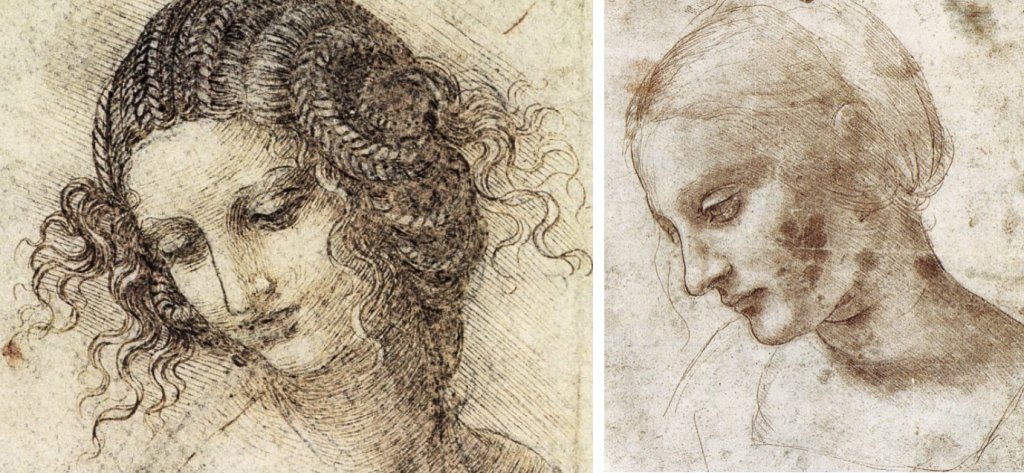This timeline will support a Purdue's Honors College course, da Vinci and the Renaissance, along with a connected study-abroad program to Venice and Florence over March Break 2020.
da Vinci and the Renaissance 2020 Dashboard
Description
 Da Vinci and the Renaissance is a fully cross-disciplinary study-abroad program that explores the transition from the medieval period to the Renaissance across multiple subjects (art, architecture, engineering, science and more), laying out how much of what we take for granted today about technology or about the human subject were implemented in this rich period, especially in Italy. Our focus will be that most famous “Renaissance man,” Leonardo da Vinci. The course’s interdisciplinary approach asks students to think about the constructed nature of the things we take for granted as “natural” (e.g., time, space, human subjectivity, meaning, sight, knowledge, and law), thus opening our eyes to the significance of cultural differences. We will also consider the many ways that we are now seeing a cultural, ontological, and epistemological shift that is as far-reaching as the one between the medieval period and the Renaissance
Da Vinci and the Renaissance is a fully cross-disciplinary study-abroad program that explores the transition from the medieval period to the Renaissance across multiple subjects (art, architecture, engineering, science and more), laying out how much of what we take for granted today about technology or about the human subject were implemented in this rich period, especially in Italy. Our focus will be that most famous “Renaissance man,” Leonardo da Vinci. The course’s interdisciplinary approach asks students to think about the constructed nature of the things we take for granted as “natural” (e.g., time, space, human subjectivity, meaning, sight, knowledge, and law), thus opening our eyes to the significance of cultural differences. We will also consider the many ways that we are now seeing a cultural, ontological, and epistemological shift that is as far-reaching as the one between the medieval period and the Renaissance
The 3 credits will be split between 8 weeks of instruction at Purdue (1 credit) and our study-abroad program to Venice and Florence (2 credits). In Italy, we will see a number of things that we will have discussed before getting on a plane together. We will also think about the nature of confronting a different culture and of being a tourist in a foreign land.
Galleries, Timelines, and Maps
This map, created by students in my HONR 299 course at Purdue, will support the study-abroad course, da Vinci and the Renaissance, as well as its connected study-abroad program, which will occur March 2019 in Venice and Florence, Italy.
This gallery of images will support the Purdue Honors College course, da Vinci and the Renaissance, as well as its connected study-abroad program in Venice and Florence, Italy (March 2020).
Individual Entries
Brunelleschi was inspired to integrate features of Roman architecture into his projects after he visited Rome in 1403. There, he took a look at the ancient buildings and ruins and noticed that each one one displayed characteristics of classical architeture: a huge focus on symmetry and use of geometrical shapes. In his future projects, he would incorporate these elements including a more simple, balanced appearance in his designs.
Source: Argan, Giulio Carlo, and Nesca A. Robb. “The Architecture of Brunelleschi and the Origins of Perspective Theory in the Fifteenth Century.” Journal of the Warburg and Courtauld Institutes, vol. 9, 1946, pp. 96–121. JSTOR, www.jstor.org/stable/750311.
After his trip to Rome, Brunelleschi would bring back all the ideas and observations to work on his architectural projects. The two most iconic ones were on the Church of San Lorenzo and the Florence Cathedral. The first saw him implement his mathematical skills by designing an interior that fulfilled the symmetrical aspect through even-spaced columns and spaces. The second involved a dome that he was chosen to design, using arches to form an octagonal shape to keep it standing. His contributions would inspire more future architects including da Vinci.
Source: Saalman, Howard. Filippo Brunelleschi: the Buildings. A. Zwemmer, 1993.
Brunelleschi would make much of his contributions to the early part of the Renaissance in Florence, Italy where he worked on two of his most notable projects: the Church of San Lorenzo and the Florence Cathedral. The interior of the Church of San Lorenzo represents the idea that, according to the ideas of classicism, buildings must follow a symmetrical and balanced appearance. The Florence Cathedral was famous for its dome, which was the largest in the world when it opened.
